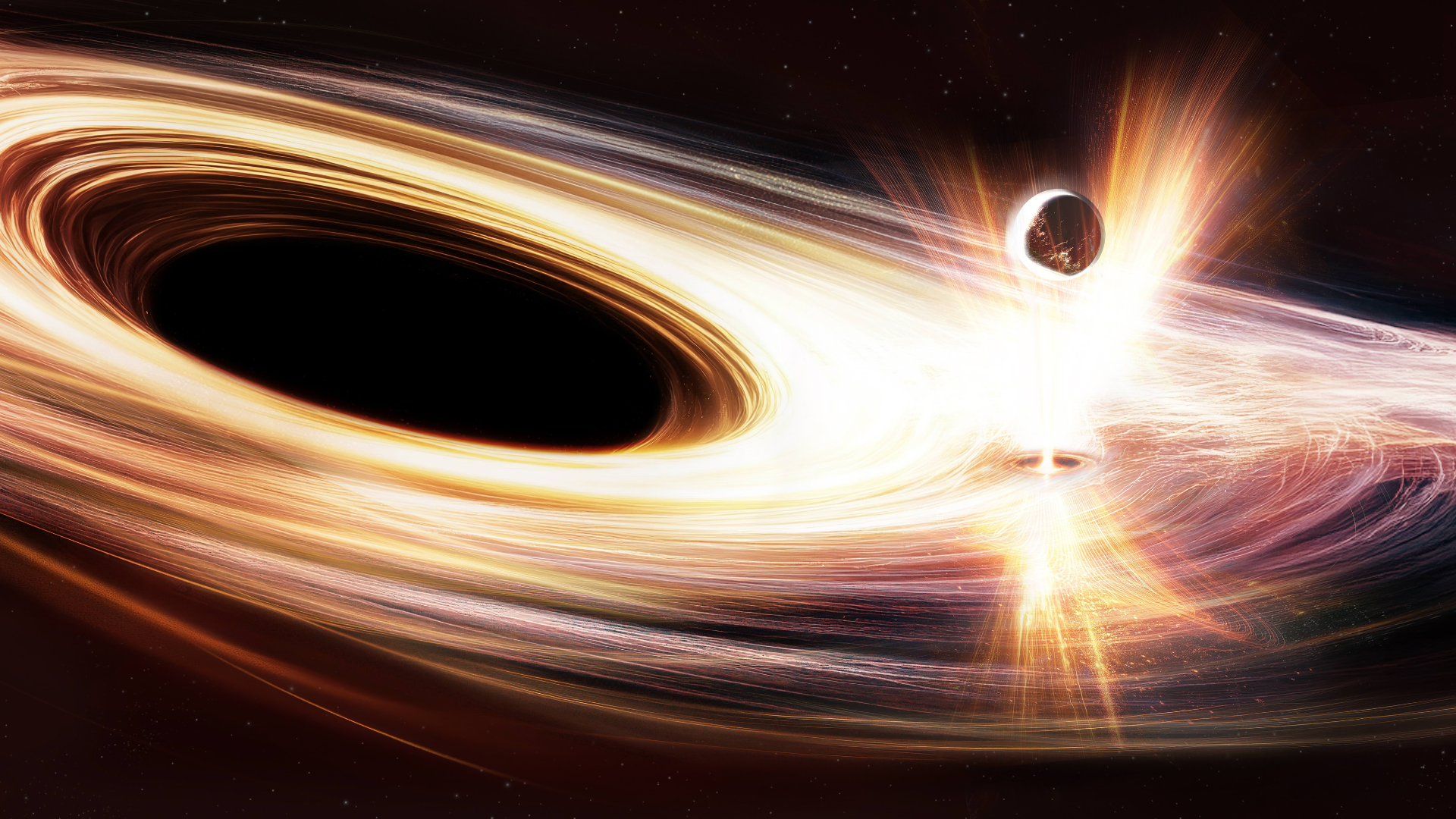Could we use black holes to power future human civilizations? 'There is no limitation to extracting the enormous energy from a rotating black hole'
"In principle, extraction is possible, and it could be a clean and efficient solution to the complex energy problems we will likely face as a society in the distant future"
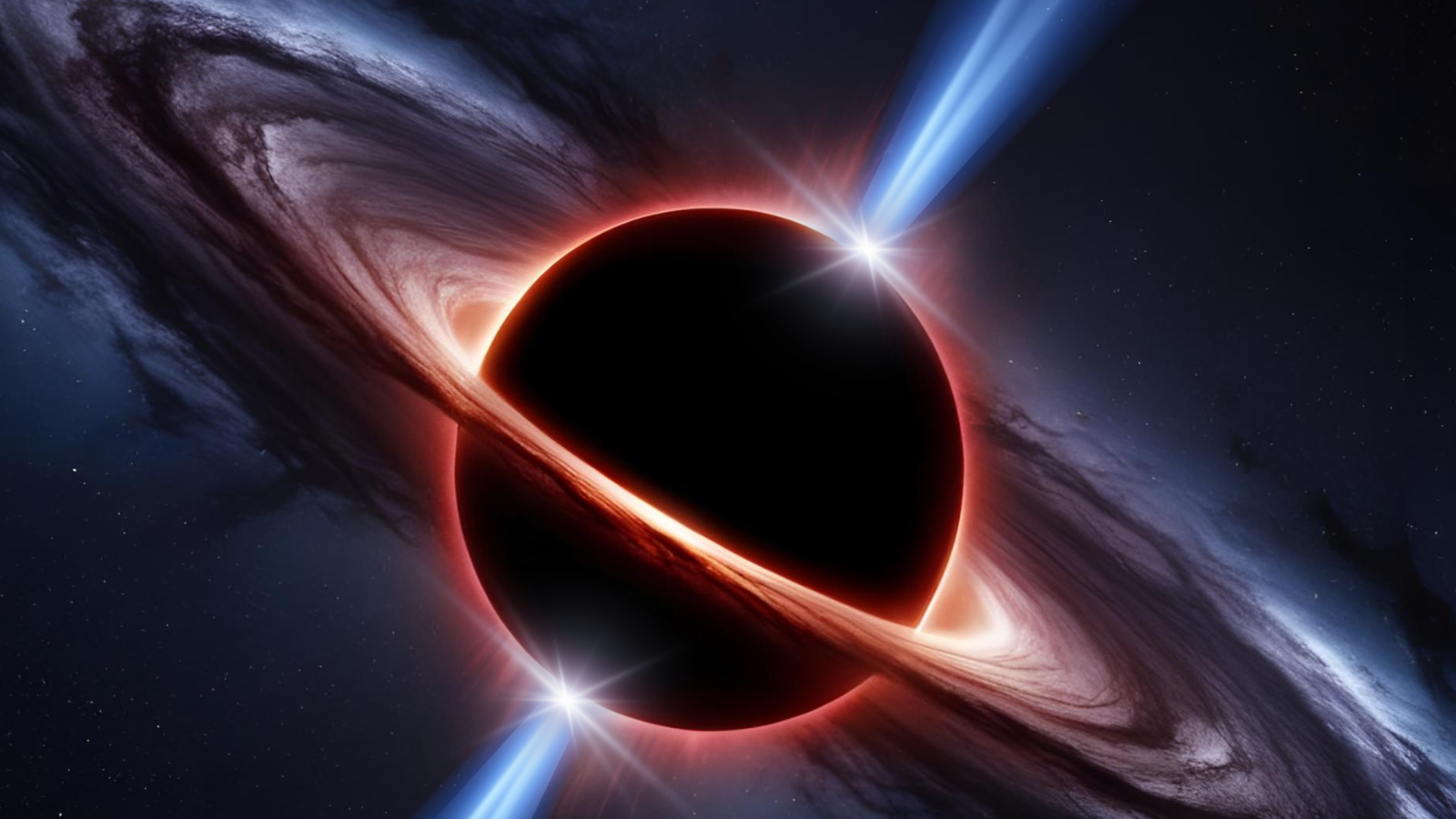
Humans are quite rightly fascinated by black holes, but could we ever harness them as an energy source? New research poses this question in order to explore some of the most wonderous cosmic events.
Black holes are bounded by outer barriers called event horizons that prevent us from ever viewing their interiors or their hearts, singularities at which all known laws of physics collapse. This means black holes couldn't be more mysterious. Black holes are also unlike anything found on Earth or in the solar system in another respect: their sheer power.
When surrounded by matter, black holes can be responsible for the most energetic phenomena in the known universe, including quasars that outshine the combined light of the billions of stars found in the galaxies that contain them. It's little wonder that physicists have long pondered if some of this energy could be harvested.
"In an important article written in 1969, Nobel Prize-winning physicist Roger Penrose speculated on the possibility that an advanced civilization could extract energy from a rotating black hole," research author Jorge Pinochet of the Metropolitan University of Educational Sciences told Space.com. "In principle, extraction is possible, and it could be a clean and efficient solution to the complex energy problems we will likely face as a society in the distant future."
Black holes are a drag
The energy that Penrose and now Pinochet suggest could theoretically be extracted from black holes is the kinetic energy that keeps them rotating.
Obviously, black holes aren't the only cosmic objects that rotate, but there is something very special about rotating black holes or "Kerr black holes" that isn't true for other spinning cosmic bodies
"Kerr black holes are capable of spinning at speeds close to the speed of light in a vacuum, which is the maximum speed allowed by relativistic physics," Pinochet said. "No other object in the universe could do this because centrifugal forces would tear it apart."
Get the Space.com Newsletter
Breaking space news, the latest updates on rocket launches, skywatching events and more!
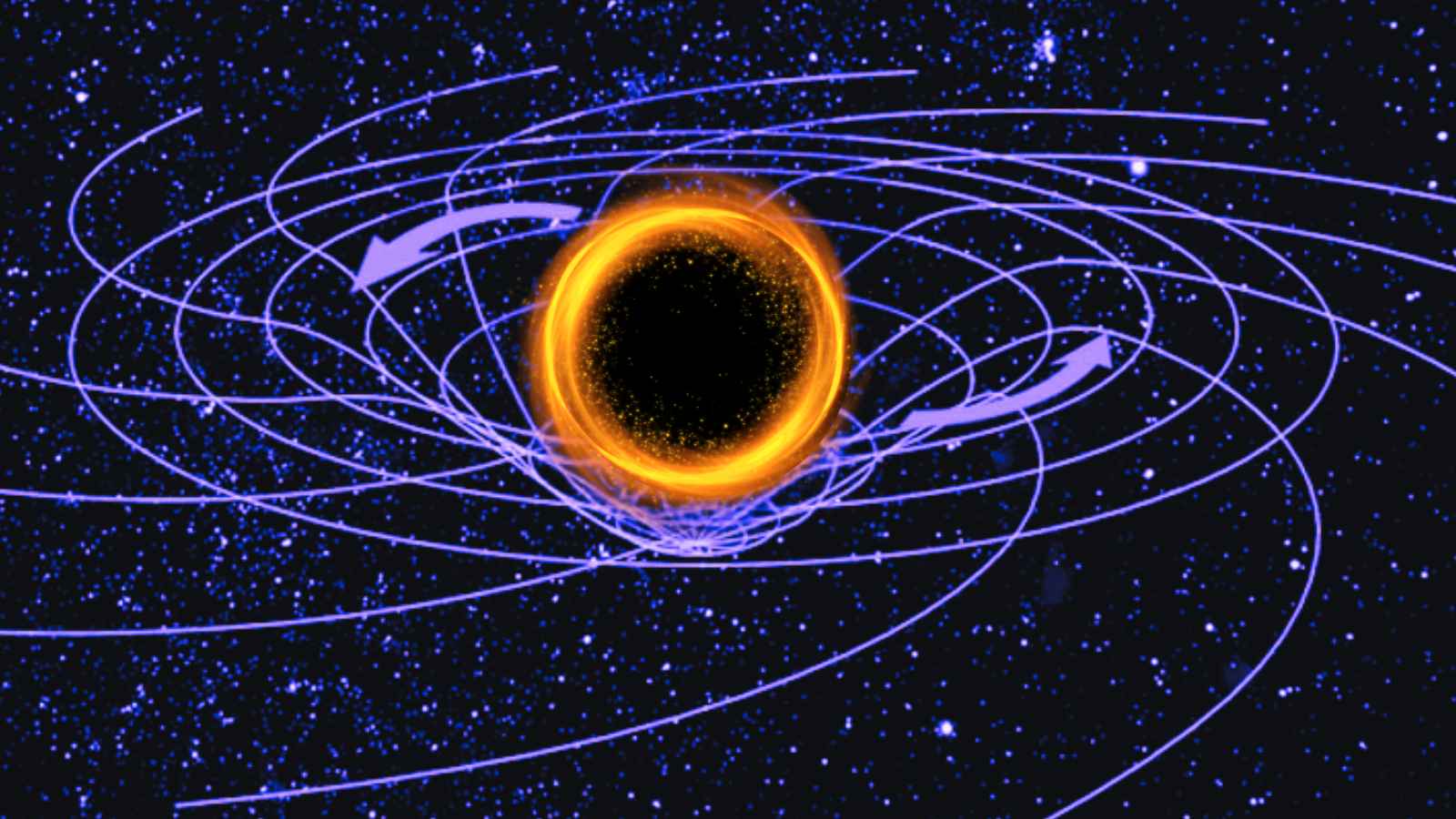
As they spin, the immense gravitational influence of Kerr black holes drag the very fabric of space around with them in a process called "frame-dragging" or the "Lense-Thirring effect," named after the physicists who first proposed it, Josef Lense and Hans Thirring.
This churning of the fabric of space means that the objects and matter surrounding a black hole cannot sit still, and are dragged along as the black hole swirls its surroundings.
"As we all learn in school, the most basic form of energy is that associated with motion, called kinetic energy, which depends on speed," Pinochet added. "So, a rotating black hole has rotational kinetic energy, and by pulling space along with it, it imparts its extraordinary rotational energy to the objects in its surroundings."
How does nature extract black hole energy?
Nature's preferred mechanism to extract black hole energy can be seen in "quasars." These are supermassive black holes with masses millions or billions of times that of the sun, surrounded by a flattened cloud of swirling gas and dust called an accretion disk.
This is replicated, albeit on a much smaller scale, by "microquasars," where an accretion disk of gas and dust surrounds a much smaller rotating stellar mass black hole with a mass between 10 and 100 times that of the sun.
"During the spin of the accretion disk, the different parts of the disk rub against each other, transforming into a plasma at temperatures reaching millions of kelvins, which leads to the emission of large amounts of radiation," Pinochet said. "As it spins, the material in the accretion disk describes spiral trajectories toward the jaws of the black hole, which gradually devours it."
Material that isn't devoured by the black hole can be channeled to its poles by powerful magnetic fields. There, it is accelerated to velocities approaching the speed of light. This matter is blasted out as energetic jets called "relativistic jets," one from each pole and oriented at 90 degrees to the black hole's rotational plane.
"Since supermassive black holes reside at the center of most galaxies, quasars are colossal phenomena that occur on galactic scales," Pinochet said.
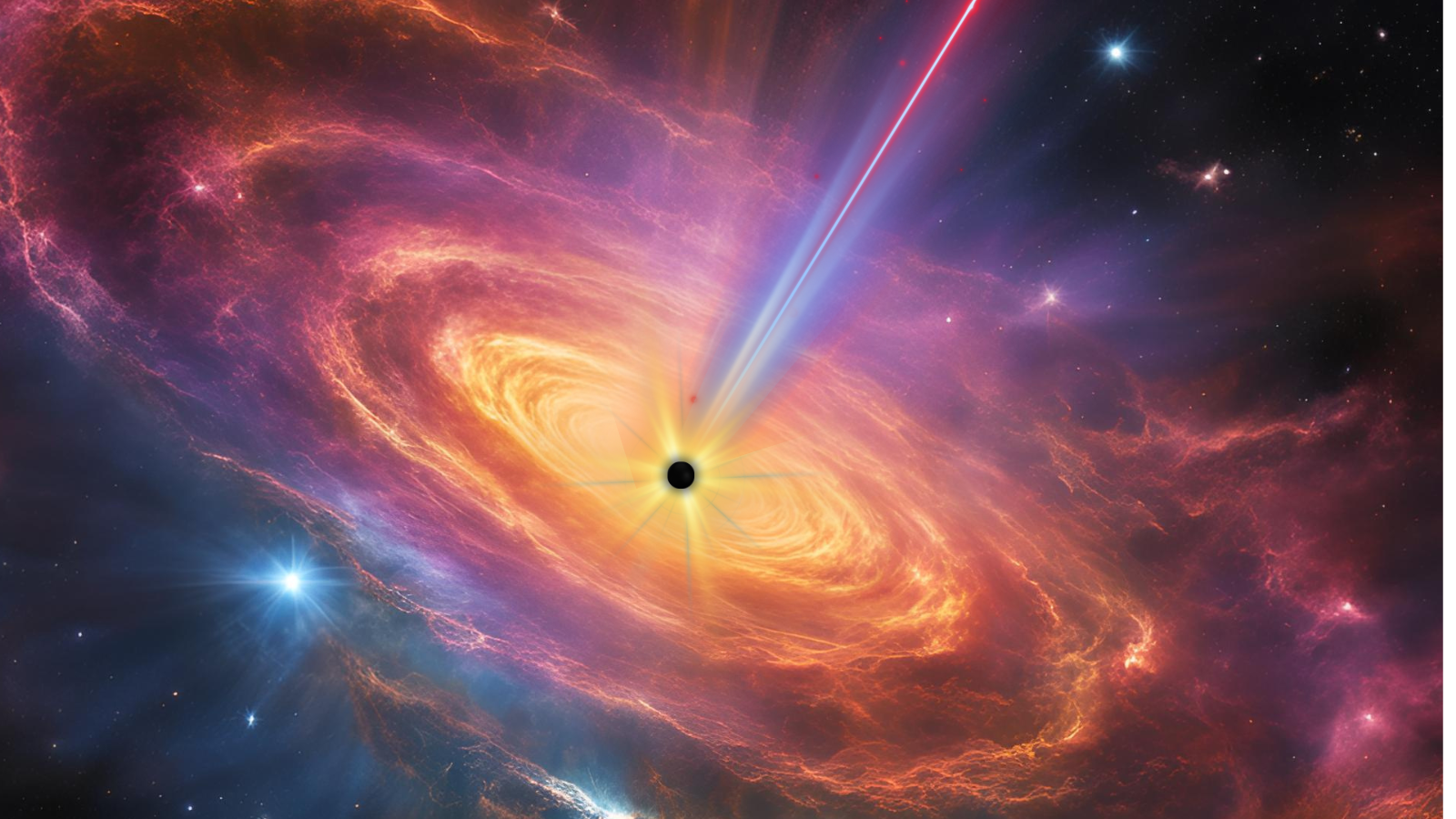
The source of energy for these incredibly powerful phenomena is the rotational energy of the Kerr black hole.
"As a rotating black hole transfers energy to its surroundings, the source of this energy, which is its rotation, is depleted, which means that the black hole spins increasingly slowly," Pinochet said. "In theory, this process stops when the black hole stops spinning, becoming a static or 'Schwarzschild' black hole."
Because black holes are thought to possess very few characteristics, the most prominent of which are rotation or "spin" and mass, the Schwarzschild black hole is the simplest type of black hole since the only parameter that describes it is its mass.
"This differentiates it from a Kerr black hole, which is the mathematical model for describing a rotating black hole, characterized by both its mass and its rotation, or angular momentum," Pinochet said.
Could we create 'black hole batteries?'
There is a vast gulf between knowing that nature has found a way to extract energy from black holes and humanity's ability to replicate this process. The easiest way to do this would not focus on the black hole's impressive rotational energy.
"Perhaps the simplest form of energy extraction would be to directly harness the fantastic radiation emissions of quasars or microquasars, just as on Earth we harness the energy radiated by the sun," Pinochet explained. "However, in this case, we are not directly extracting rotational energy, but rather the thermal energy produced by rotation."
Extracting the rotational energy of a black hole would be more complicated, but still theoretically possible. In his 1969 article, Penrose described a mechanism that could directly utilize rotational energy instead of thermal energy.
Pinochet models this mechanism with an easy-to-understand analogy that cannot be taken literally but can present an intuitive idea of the energy extraction method devised by Penrose.
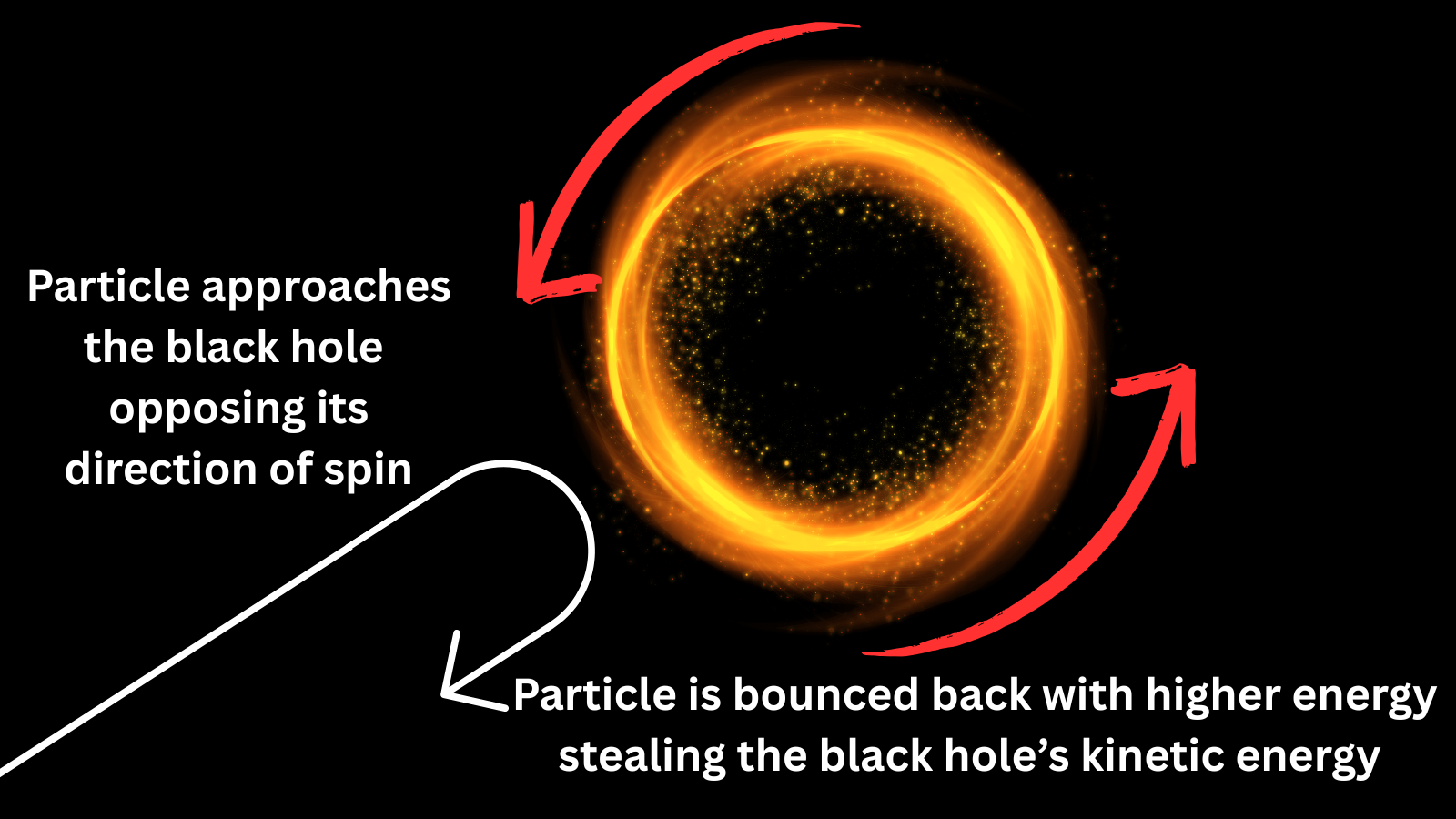
Pinochet suggested imagining a carousel that spins only by inertia; that is, after receiving an initial push or "impulse," it continues spinning even though the motors are off.
If a child throws a ball at one of the merry-go-rounds, against the direction of rotation, the ball will bounce back, gaining a higher speed than it initially had. As a result, the carousel will have lost some of its rotational speed. That means the ball's extra kinetic energy comes from the rotational kinetic energy of the carousel.
"What Penrose imagined is that we launch a particle against the direction of rotation of a black hole, and a fragment of this particle returns to us with greater energy than the initially launched particle," Pinochet said. "As a result, the black hole will have lost some of its rotational energy and will spin more slowly. In other words, we will have extracted energy from the black hole at the expense of its rotation."
Science or science fiction? Why not both?
As Penrose pointed out when he initially posited energy extraction from a black hole at the end of the 1960s, such a feat would only be achievable by an incredibly advanced civilization.
To clarify just how far humanity is from becoming such a civilisation, Pinochet refers to the "Kardashev scale," which measures the degree of technological evolution of a civilization according to three categories, called Type I, II, and III.
"Type I corresponds to a civilization that has mastered the resources of its home planet; Type II has mastered the resources of its planetary system; and Type III has mastered the resources of its galaxy," he explained. "According to the Kardashev scale, we are a Type 0.7 civilization. To master the rotational energy of a microquasar, we would need to be a Type II civilization, and to master the energy of a quasar, we would need to be a Type III civilization.
"So, we still have a long way to go before we can seriously consider the possibility of extracting energy from a rotating black hole."

Of course, even if humanity was ever to reach Type III status, there is still a huge physical limitation we would have to overcome to make use of "black hole batteries."
"Perhaps the greatest difficulty is that to extract energy from a rotating black hole, we need to have one of these objects close to us, and as far as we know, there are no black holes in the solar system or its immediate vicinity," Pinochet said. "Therefore, if we wanted to harness the energy of these objects, we would have to undertake interstellar travel, which is far beyond our current technological capabilities."
For context, the closest black hole to us is Gaia BH1, located approximately 1,560 light-years away in the direction of the constellation Ophiuchus. The closest supermassive black hole to us is Sagittarius A* (Sgr A*), located at the heart of the Milky Way, 26,000 light years away. This means that even if humanity could travel at a significant fraction of light speed, such a journey would be long outside the range of our current lifespans.
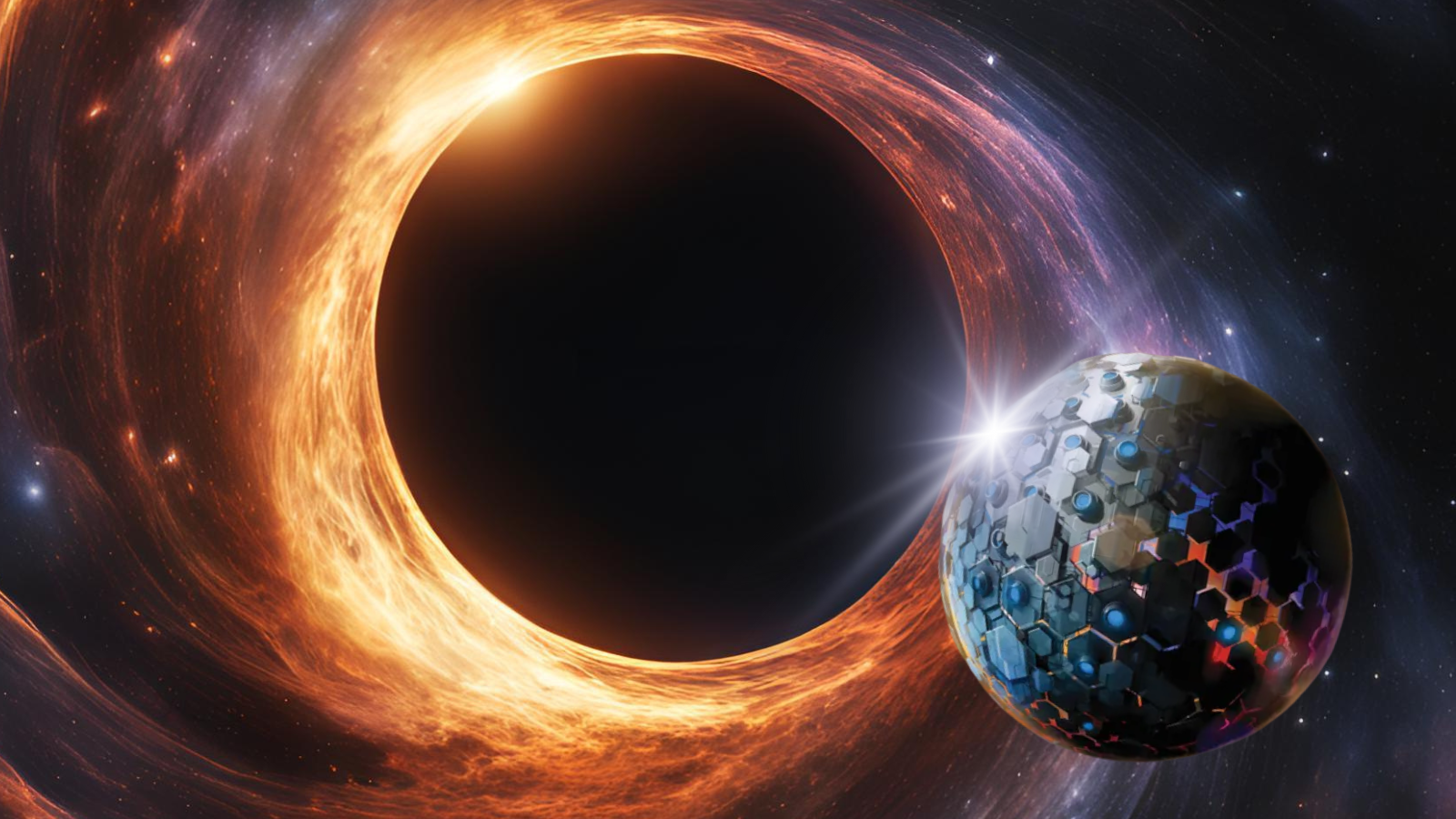
"In principle, there is no limitation to extracting the enormous energy from a rotating black hole, but the technology required to accomplish such a feat is far beyond our modest resources," Pinochet said. "However, for now, the possibility of extracting such energy is a topic closer to science fiction than to serious science."
The benefit of calculating the impossible
With the impossibility of harnessing black hole energy as things currently stand, writing a paper about black holes and their energy extraction may seem slightly strange. However, to Pinochet, thinking about ideas like this is essential to the education of the next generation of physicists.
"It is important for students to think about black holes and related topics because it contributes to their educational process," the researcher explained. "It whets their intellectual appetite, and it helps make them better scientists.
"Personally, I study black holes and the universe for the intellectual pleasure it gives me, and because it instils a sense of profound humility in the face of the grandeur of the cosmos. I believe these are the main motivations for students when they enter careers related to physics and astronomy."
Pinochet will continue to use black holes and the phenomenon associated with them as educational tools by delving next into the work of Stephen Hawking, arguably the greatest physicist of the modern age.
"A paper will soon be published in The Physics Teacher journal in which I present an elementary mathematical derivation of Stephen Hawking's greatest discovery, which the British genius summed up by saying, 'black holes aren't so black,'" Pinochet said. "What Hawking discovered is that black holes have a temperature that depends inversely on their mass. The greater the mass, the lower the temperature, which means that these objects emit radiation and, over time, evaporate."
In addition to the work on Hawking's discovery, known as Hawking radiation, Pinochet is preparing several educational papers that address other topics at the frontiers of physics, such as time machines, black holes, and dark energy.
"Ultimately, the central motivation of my work is to bring the major themes of contemporary physics to the widest possible audience," he concluded.
Pinochet's research is published on the paper repository site arXiv.
Join our Space Forums to keep talking space on the latest missions, night sky and more! And if you have a news tip, correction or comment, let us know at: community@space.com.

Robert Lea is a science journalist in the U.K. whose articles have been published in Physics World, New Scientist, Astronomy Magazine, All About Space, Newsweek and ZME Science. He also writes about science communication for Elsevier and the European Journal of Physics. Rob holds a bachelor of science degree in physics and astronomy from the U.K.’s Open University. Follow him on Twitter @sciencef1rst.
You must confirm your public display name before commenting
Please logout and then login again, you will then be prompted to enter your display name.








